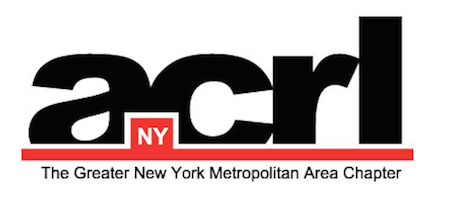For our discussion on the challenges associated with leading from the middle, we will be joined by Robert Farrell of Lehman College CUNY, co-author of the ALA Publication Managing in the middle.
If you’re interested in attending please register in advance. Registration for this event will close on Tuesday November 3rd.
The meeting will run from 9:30 to 10:45 am on Friday November 6th and will be held in Room 723, Mercy College, Manhattan, 66 W 35th St, New York, NY 10016.
Details on topic for the meeting circulated in the initial announcement follow under the “topic” heading below.
Please note that ACRL/NY discussion groups are open to current ACRL/NY members exclusively. If you are not currently a member and would like to join, you can do so here. If you’re unsure about your current membership status, please contact Werner Sbaschnik.
Please note also that all attendees of ACRL/NY discussion groups are expected to abide by ACRL/NY’s code of conduct.
Hope to see you there!
Topic
We’re all aware that as an institution libraries are in flux. At the highest administrative levels many research libraries recognize that deep change and uncomfortably rapid evolution are inevitable and respond to the acknowledged need for a shakeup by soliciting innovative initiative from all levels of their organizations. As a result, demonstrated capacities for leadership and active creativity have become frequent requirements for new appointments to – and for promotion and tenure for librarians already in – positions not endowed with any authority to impose change. I myself hear a lot of anecdotal evidence that suggests these institutional structures too often fail to overcome their own inertia and become receptive to the evolutionary impulses they solicit from or even require of their mid-ranking constituents. It seems that often librarians hired as salutary “new blood” or “breaths of fresh air” and others charged with being change agents of one order or another find that their projects are reflexively rejected as unviable, the institutional culture and/or organizational structure being what they are.
I think it would be useful for our discussion group to share leading-from-the-middle stories. Perhaps we can learn from each other’s attempts – successful or failed – to overcome resistance and introduce change through the development and deployment of social capital and exertions of other varieties of soft influence. Hopefully this can serve as a point of departure for a discussion of strategies for productive compromise, strategies for developing innovative proposals that take full stock of the realia of the status quo and for bridging the gap between ready innovators and larger institutional structures which seem simultaneously to require and thwart initiative and to demand and resist change.
